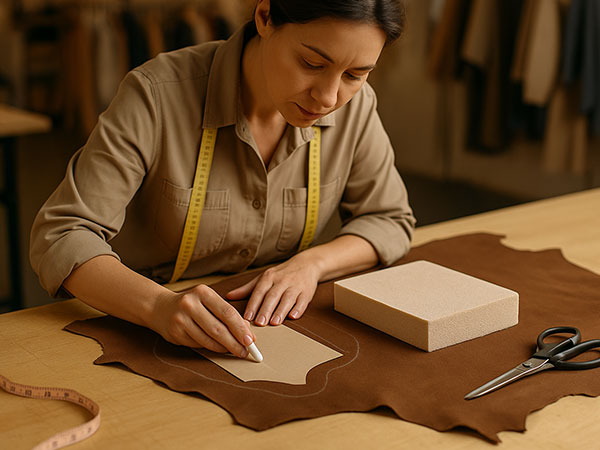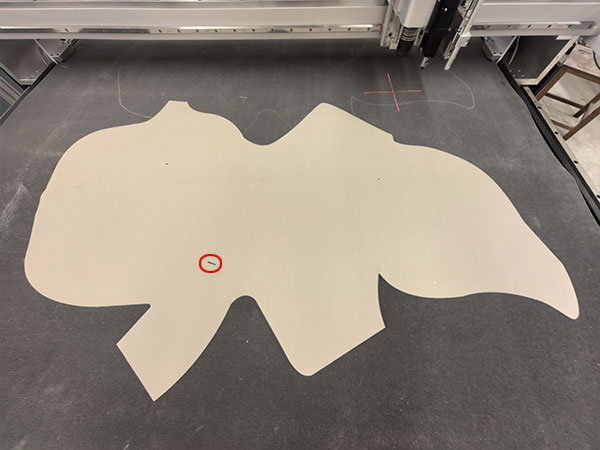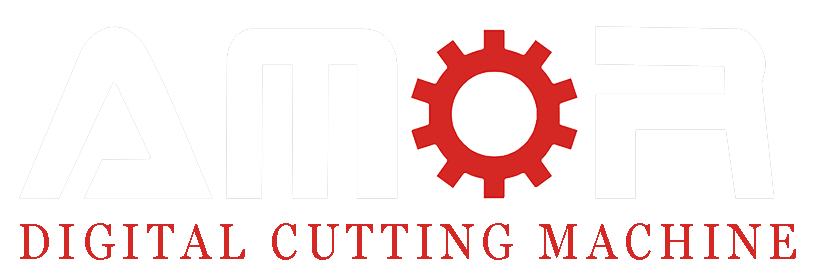Genuine leather is expensive, irregular, and full of defects. A wrong cutting method burns money every single day.
The best way to cut genuine leather, especially for batch production, is to use a cnc leather cutting machine with automatic contour and defect recognition plus nesting software. Manual cutting needs very skilled workers, works slowly, and wastes leather, while a digital leather cutter gives higher yield, stable quality, and better control of cost.

If you only wanted the short answer, you can stop here. If you are planning to invest in a leather cutting solution for sofas, shoes, or bags, the details below will help you avoid expensive mistakes and choose a system that really fits your factory.
Why is cutting genuine leather so difficult?
Many factory owners think leather cutting is just “follow the pattern and cut”. Then they see how much leather goes into the trash bin and how often they must recut parts.
The main difficulty in cutting genuine leather comes from the material itself. Genuine leather is expensive, has irregular shapes, and always has defects. If you do not manage these points well, you lose money in every hide.

High material cost and real financial risk
When I walk into a leather workshop, the first thing I notice is the value lying on the rack. A stack of full cow hides is not “stock”; it is cash. Every small mistake in cutting means direct loss. Unlike fabric, you cannot just “join a piece” if the shape is wrong. You often must recut the whole part. This risk becomes bigger when you cut big parts for soft sofas, car seats, or high-end bags.
Irregular shape and natural defects
A leather hide is not a clean rectangle. It has a neck, belly, and leg areas. Each zone has a different quality and stretch. On top of this, there are natural defects: scars, holes, insect bites, brands, and loose grain. When you cut by eye, you must decide quickly where to place each pattern piece. If the worker misjudges a weak zone, the final product will wrinkle, deform, or even tear in use. So the shape and defects make every hide a small puzzle.
Uneven thickness and stretch
Leather is not as uniform as synthetic sheet material. Thickness and softness can change from one zone to another. This affects how the leather behaves under tension, especially in shoes and upholstery. If you place a stress area of a pattern in a soft zone, the product may lose shape. Good cutters try to “read” the hide and place pieces in better areas, but this needs many years of experience. Without support tools, even skilled workers can make mistakes when they are tired or under time pressure.
How this shapes the cutting method
Because of these factors, the best cutting method must do more than just follow a contour. It must help the operator see and mark defects clearly. It must help place patterns in a smart way. It must help control waste. Manual cutting can handle these tasks only with very experienced workers. A digital system can turn these steps into a more standard and controllable process.
Is manual cutting still a good option for genuine leather?
Many factories still rely on manual cutting because this is how they started. There is a belief that “only the old master cutter can handle leather”. I understand this idea, but I also see its limits every year.
Manual leather cutting can work for very small volumes or special custom pieces. However, for most modern production with higher volumes and tight deadlines, manual cutting brings low efficiency, high labor cost, unstable quality, and serious management pressure.
| Item | Manual Genuine Leather Cutting | CNC Automatic Leather Cutting Machine |
|---|---|---|
| Required skill level | Very high, needs years of experience | Medium, operators can be trained with clear procedures |
| Cutting speed | Low, depends on worker and mood | High, stable speed, planned cycle time |
| Dimensional accuracy | Varies by person, easy to drift | High accuracy, follows digital pattern exactly |
| Quality consistency | Unstable across shifts and workers | Stable from first piece to last |
| Material utilization (yield) | Often low, relies on cutter’s eye | Higher, with automatic nesting and defect avoidance |
| Defect handling | Marked by eye, easy to forget or misplace | Defects marked on screen, software avoids them during nesting |
| Shape and style complexity | Limited by worker skill and patience | Handles complex shapes, small parts, and many sizes easily |
| Changeover between styles | Slow, needs pattern search and re-layout | Fast, just load a new digital file and re-nest |
| Labor cost | High, needs skilled cutters with higher salaries | Lower per piece, fewer people needed for the same output |
| Training and replacement | Long training cycle, hard to replace master cutters | Shorter training; easier to add or replace operators |
| Data and traceability | Almost none, hard to measure true yield and cost | Full data on yield, time, and consumption per order or style |
| Planning and management | Hard to plan capacity, strong dependence on few people | Easier to plan shifts and output based on machine cycle times |
| Safety and ergonomics | More knife handling, higher risk of cuts and fatigue | Less manual cutting, safer and more ergonomic |
| Suitable production volume | Very small batches, simple custom or repair work | Small to large batches, ideal for regular and repeated orders |
| Best fit product type | One-off custom pieces, prototypes | Batch production of sofas, shoes, bags, automotive, furniture etc. |
| Investment cost | Low equipment cost, high hidden cost in waste and labor | Higher initial cost, but strong savings in yield and labor |
| Return on investment (ROI) | Hard to improve; depends on people | Clear ROI from higher yield, speed, and stable quality |
Manual cutting needs very skilled workers
A good leather cutter must judge quality, read defects, and place patterns quickly. It takes years to build this skill. Younger workers are not always willing to stay long enough to reach this level. When a key cutter leaves, the factory feels it at once. This dependence on one or two people is a real risk. I have seen factories where production almost stops when the main cutter gets sick.
Low efficiency and unstable quality
Manual cutting looks flexible, but it is often slow. The cutter needs time to move patterns, align grain, mark seam allowances, and cut with a knife. The speed also depends on mood, health, and fatigue. Early in the day, the cutter is sharp. Near the end of the shift, attention drops. This leads to unstable quality. Some parts are perfect, others are slightly off. In leather, even a few millimeters can change how a seam looks in a luxury product.
High leather waste and poor yield
Without nesting software, pattern placement depends on the eye of the cutter. Some cutters are very good and can reach a decent yield. Others leave large empty spaces on the hide because they want to work fast or avoid thinking too much. Over a month, this waste adds up to many hides. When you calculate the value of that leather, you often see that the “cheap” manual method is not cheap at all.
Hard to manage and scale
When your cutting performance depends on one or two old masters, your whole business is tied to their personal situation. It is hard to set standard times, plan capacity, or promise tight delivery dates. It is also hard to open a second factory or add a new shift, because you cannot simply “copy” the master cutter. This is where a digital leather cutting system changes the game. It moves the skill from one person’s hands into a repeatable process.
How does a cnc leather cutting machine improve yield and efficiency?
Many people think a cnc leather cutting machine is just “a faster knife”. In real projects, the most important value is not speed alone. The system can recognize the hide contour, mark defects, perform automatic nesting, and then cut quickly. This chain gives a big improvement in both yield and efficiency.
The best way to cut genuine leather in volume is to use a cnc leather cutting machine with automatic contour recognition, defect marking, nesting software, and fast cutting tools. This setup reduces waste, stabilizes quality, and makes the whole process easier to manage.
Contour and defect recognition
First, the operator places the hide on the cutting table. A camera or projector system captures the real contour of the hide. The system shows this contour on the screen. The operator then marks defects with a pen or by clicking on the image. The software saves these areas as “no-go zones”. This step uses the human eye for quality judgment but turns it into clear data. You no longer rely on memory or tape marks on the leather.
Automatic nesting on real hides
Once the contour and defects are in the system, the nesting software places pattern pieces inside the usable area. It avoids defects and the outer edges. It also follows rules for grain direction and pair parts. The software can test thousands of combinations in a short time and choose the layout with the best yield. In practice, this can improve leather utilization by a clear margin compared to manual placement. For expensive hides, even a few percent more yield is a big saving.
Fast and accurate cutting
After nesting, the cnc leather cutting machine starts cutting. The system follows the digital paths with high accuracy. The knife does not “drift” like a hand-held blade. Every piece matches the pattern. This is very important for shoes, bags, and car seats where small size differences cause problems in stitching and assembly. The machine keeps the same quality in the morning, afternoon, and at the end of the shift.
Better data and easier management
Because all jobs go through the system, you build a data history. You can see how much leather you used per style, per order, and per day. You can see the real yield. You can test different nesting settings and compare results. This gives you a clear base for decisions. You are no longer guessing or arguing about who “wastes more leather”. The system shows the facts.
When should I invest in a cnc leather cutting machine for genuine leather?
Some owners ask me: “Is a cnc leather cutting machine only for very big factories?” My answer is simple. If you cut genuine leather in batches for sofas, shoes, or bags, and you want to control cost and quality, you should at least evaluate a cnc solution.
If you need to handle batch leather cutting, a cnc leather cutting machine is usually the best choice. For soft sofa production, cutting a full cow hide takes about 3–5 minutes. For shoes or bags, cutting a half hide with many small pieces takes about 15–20 minutes. The speed and yield together create a strong return on investment.

Sofa and soft seating production
For soft sofas, each full hide often goes to large panels: back, seat, arms, and some smaller parts. A good cnc leather cutter can scan, nest, and cut one full hide in a few minutes. In practice, I often see cutting times in the range of 3–5 minutes per hide, depending on style complexity. This speed means you can prepare leather sets fast enough for one or more sewing lines without stress.
Shoes and bags with many small parts
For shoes and bags, each hide produces many smaller pieces. The nesting is more complex. However, the cnc system handles this very well, because it can test many placements quickly. A common setup is to cut about half a hide per job, with cutting times around 15–20 minutes. During this time, the operator can prepare the next hide or handle other tasks. This makes the whole process smooth and continuous.
When the numbers make sense
If you calculate how many hides you cut per day, how much leather you waste, and how many cutters you employ, you often see a clear pattern. The higher the leather price and the higher the volume, the stronger the case for a cnc leather cutting machine. The system reduces waste, stabilizes quality, and lowers dependence on a few master cutters. When you put real numbers into this picture, the decision becomes much easier.
Planning for growth and long-term value
A cnc leather cutting machine is not just a cost. It is an asset that supports future growth. As your orders grow, you can extend working hours or add a second line. Your cutting process stays under control. Your new staff work with a clear system, not with a pile of paper patterns on the floor. This is how many factories move from “firefighting” to stable and planned production.
The best way to cut genuine leather in real production is to move from manual cutting to a cnc leather cutting machine with contour recognition, defect marking, and automatic nesting, so you can protect every hide and keep your quality stable.



